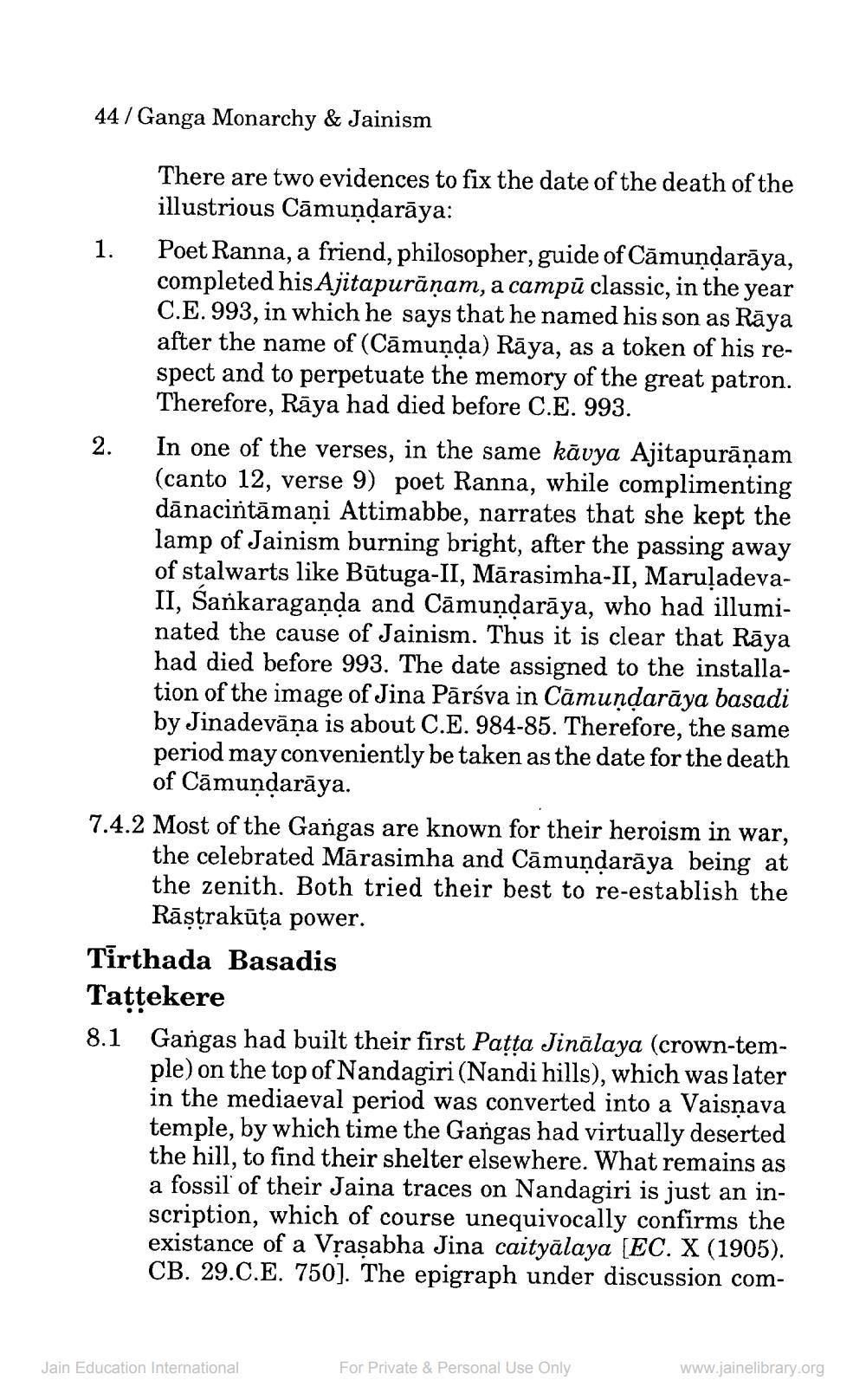________________
44/Ganga Monarchy & Jainism
1.
2.
There are two evidences to fix the date of the death of the illustrious Camuṇḍarāya:
Poet Ranna, a friend, philosopher, guide of Camuṇḍarāya, completed his Ajitapurānam, a campū classic, in the year C.E. 993, in which he says that he named his son as Rāya after the name of (Camunda) Rāya, as a token of his respect and to perpetuate the memory of the great patron. Therefore, Raya had died before C.E. 993.
In one of the verses, in the same kavya Ajitapurāṇam (canto 12, verse 9) poet Ranna, while complimenting dānacintāmaṇi Attimabbe, narrates that she kept the lamp of Jainism burning bright, after the passing away of stalwarts like Būtuga-II, Mārasimha-II, MaruladevaII, Sankaraganda and Camuṇḍarāya, who had illuminated the cause of Jainism. Thus it is clear that Raya had died before 993. The date assigned to the installation of the image of Jina Parsva in Camuṇḍarāya basadi by Jinadevāṇa is about C.E. 984-85. Therefore, the same period may conveniently be taken as the date for the death of Camuṇḍarāya.
7.4.2 Most of the Gangas are known for their heroism in war, the celebrated Mārasimha and Camuṇḍaraya being at the zenith. Both tried their best to re-establish the Rāṣṭrakūṭa power.
Tirthada Basadis
Taṭṭekere
8.1 Gangas had built their first Paṭṭa Jinalaya (crown-temple) on the top of Nandagiri (Nandi hills), which was later in the mediaeval period was converted into a Vaisnava temple, by which time the Gangas had virtually deserted the hill, to find their shelter elsewhere. What remains as a fossil of their Jaina traces on Nandagiri is just an inscription, which of course unequivocally confirms the existance of a Vraṣabha Jina caityalaya [EC. X (1905). CB. 29.C.E. 750]. The epigraph under discussion com
Jain Education International
For Private & Personal Use Only
www.jainelibrary.org




